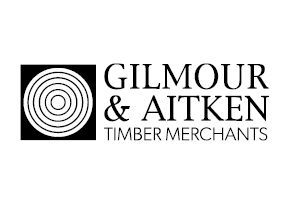- Case Studies
- 121, St. Clare's, Oxford
121, St. Clare's, Oxford
Introduction
St. Clare’s is a private sixth-form college which provides courses in the International Baccalaureate. It was founded in 1953 and has 375 students, most of whom are boarders. The college is housed in a number of discreet ‘villas’ along the Banbury Road, Oxford, one of which, a fine detached Grade II listed Arts and Crafts villa, was built in 1903 to the design of the architect Henry Thomas Hare, a former RIBA president. The villa is set back from the main road and in the 1960s an extra wing was clumsily added to fill the large gardens at the rear of the house. This has now been replaced by five new individual buildings designed by architect Hodder and Partners.
The new buildings are positioned with great care at the rear of the villa, woven between existing mature trees and linked by walkways to create a semi-enclosed quadrangle reminiscent of the traditional Oxford college layout. The accommodation includes 36 study bedrooms, rooms for three wardens, two common rooms, and an Arts Studio.
With their clean modern lines, these new buildings contrast well with the ornate flourishes of Hare’s original villa. Viewed from the main Banbury Road entrance, the villa is now flanked on one side by a new two storey three-bedroom house for the warden, clad with precast concrete panels on the ground floor, vertical oak boards on the first floor and edged with a crisp zinc roof. On its other side is a new single storey building which extends beyond the villa and into the rear quadrangle, rising to form a lofty and spacious timber-lined Arts Studio.
On the far side of the quadrangle, facing the original villa, stands the new Garden Pavilion, a pair of linked two and three-storey buildings, one of which is sunk half a storey into the ground to reduce its visual impact on neighbours. The quadrangle has been completed on the south side by the South Pavilion, a new two storey building.
Both the Garden Pavilion and the the South Pavilion contain double and single study bedrooms and their cellular nature is clearly expressed in both structure and façade; the cross-laminated timber wall and floor frames, clad with oak, are strongly articulated on the façades and enclose a series of recessed structurally glazed bay windows, one for each study bedroom. A desk is fitted at each bay window alongside an oak-clad panel which pivots open for ventilation.
The choice of timber
All five new buildings have a structure of cross-laminated timber (CLT) and are clad extensively with a rainscreen of vertical oak boards. Parts of the interior are also clad with CLT panels and boards.
A CLT structure of wall and floor panels was the ideal choice for the Garden Pavilion and the South Pavilion, exactly reflecting the cellular nature of the study bedroom accommodation.
CLT had other advantages; the position of the listed building gave very restricted access to the rear of the site, but as they were lightweight and cellular, the CLT panels could be craned right over it. In addition, the client required the project to be completed in time for the start of the new academic year; this required a construction methodology, such as CLT, which was efficient and suited the site constraints.
The wall and floor panels used for the structure of the pavilions are generally 100mm thick spruce CLT; they are clad with insulation and a rainscreen of vertical oak boards. The fire resisting properties of CLT were especially useful in areas such as the lift shafts. In the Arts Studio, the oak glulam structure and the CLT wall and roof panels are exposed, creating a warm and tactile interior.
The oak cladding was chosen, as the architect explains: ‘The choice of oak as a cladding material, both inside and out, was driven by the listed building, articulating between new and old. The material language also seeks to reinforce the notion of pavilions in a garden; upper storeys are articulated over the landscape.’
The Arts Studio
A new single storey office, cloakroom and dark room stands alongside the original house, with a main entrance door next to the north boundary wall. A corridor leads to the Arts Studio, a large, naturally ventilated lofty space with a warm, timber-lined interior. The structure is exposed and consists of a series of oak glulam portal frames which in turn support spruce CLT roof and wall panels together with an insulated standing seam zinc roof. Two continuous structurally glazed clerestory windows along the north wall fill this large room with light.
On the south side, a series of glazed panels and doors, lined with side-hung oak shutters, are set between the glulam columns. The doors and shutters, which can be used to shelter the studio from strong sunlight, open onto the quadrangle and the walkway. An oak-clad CLT canopy cantilevers over the walkway for the full length of the studio, supported by the glulam columns. The canopy and the glulam columns continue beyond the end wall of the studio, creating a cloister-like loggia which defines the walkway along the north side of the quadrangle.
The 200 x 600mm oak glulam beams and columns are set 1.7 metres apart, creating a clear span, 2.6 metres high. The visual grade CLT ceiling soffit is exposed and treated with an 8 per cent white tint coating to achieve Class O Surface spread of flame. The oak glulam beams were treated with the same coating but with a clear finish.
The oak cladding
The external cladding of 20 x 110mm European oak boards was sustainably sourced and machined by Timbmet to a tongued and grooved profile with a deeper groove on the tongued end, producing a 15mm vertical gap between the boards. The boards were site-fixed as a rainscreen, with battens infilled with insulation, a membrane, and counter-battens. Air gaps generally run horizontally between the counter battens with continuous vertical vents introduced at mitred external corners, abutments and other breaks. The oak boards were finished with clear Osmo UV Protection Oil. The oak cladding, the oak doors and the oak ventilation slots were built and installed by local contractor and joiner Benfield & Loxley; the company also built the oak staircases and the internal joinery.
Sustainability
Off site fabrication was key to the sustainability of the project; the CLT frame and the oak glulam beams were prefabricated, which reduced time spent on site. The 36 study bedrooms were fitted with prefabricated bathroom ‘pods’, also reducing time on site and reducing the use of ‘wet' trades.
A fabric-first approach governs the energy efficiency strategy, with low U-Values (significantly improved over Part L), a high efficiency gas boiler, natural ventilation in the art studio and the study bedrooms, and low G-value glazing.
Photography: © Peter Cook
October 2015
Building Type:College building
Location:Banbury Road, Oxford
Client:St. Clare’s College, Oxford
Architect:Hodder + Partners
Structural Engineer:Thornton Tomasetti
Main Contractor:Benfield & Loxley, Oxford
Structural Timber Engineer: CLT Sub-contractor: Joinery:Benfield & Loxley, D Smith Joinery, Oxford
CLT Supplier:Hasslacher Norica Timber
Oak Glulam Supplier:Neue Holzbau AG
Timber Supplier: Timber Elements:Structure, staircases, external and internal cladding, doors.
Timber Species:European spruce and European oak
Suggested Reading
Specifying externally exposed structural timber
This Wood Information Sheet (WIS) looks at some of the factors to consider when specifying a desired service life for structural timbers that are to be exposed outdoors but not in contact with the ground.
This WIS addresses general principles of structural design only, giving an overview of the...
24/11/2017
Standards Update October 2017
An update of British, European and International Standards relating to timber, including new and revised Standards, those withdrawn or amended and drafts now available for public comment, updated bimonthly.
30/10/2017
List of British Standards October 2017
A list of British Standards which relate directly to timber, updated bimonthly.
30/10/2017

























